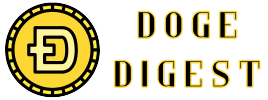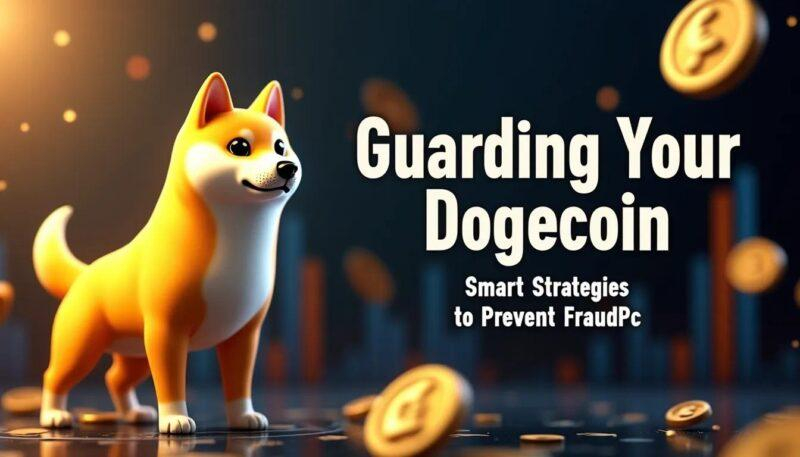In the fast-evolving world of cryptocurrency, where innovation meets internet culture, Dogecoin stands out as a unique phenomenon-a digital token born from a playful meme yet embraced by a vast and passionate community. But beyond its lighthearted origins and viral appeal lies a critical question: how secure is this beloved meme coin? As Dogecoin continues to capture attention and value, understanding the array of security measures guarding its network becomes essential. This article delves into the mechanisms that protect Dogecoin from threats, exploring how a coin that started as a joke maintains trust in the serious arena of digital finance.
Understanding the Foundations of Dogecoin Security
At the heart of Dogecoin’s resilience lies a blockchain architecture inspired by Bitcoin yet tailored for speed and accessibility. Its Proof-of-Work (PoW) consensus mechanism ensures network integrity through a decentralized process where miners validate transactions and secure the ledger. This decentralization minimizes risks of single-point failures and censorship, solidifying trust in transactions despite Dogecoin’s playful origins.
Equally important is Dogecoin’s integration with the Scrypt hashing algorithm, setting it apart from Bitcoin’s SHA-256. Scrypt demands significant memory resources for mining, making specialized hardware less dominant and fostering a broader, more diverse mining community. This inclusivity amplifies network security by distributing computational power, thwarting attempts at majority control or manipulation.
Key features enhancing Dogecoin’s security include:
- Rapid block generation, reducing transaction confirmation times and improving real-time usability.
- Merge mining compatibility with Litecoin, allowing miners to simultaneously validate both blockchains, thus bolstering Dogecoin’s hash rate and security.
- Open-source transparency, encouraging continuous community auditing and quick patching of vulnerabilities.
| Security Aspect | Benefit | Technical Highlight |
|---|---|---|
| Proof-of-Work | Decentralized validation | Mining with Scrypt |
| Rapid Block Times | Faster confirmations | One-minute blocks |
| Merge Mining | Increased hash power | Joint Litecoin mining |
Common Vulnerabilities in Meme Coin Ecosystems
While meme coins have captured the imagination of many, their ecosystems often bear unique security challenges that can jeopardize investor confidence and asset integrity. One of the most pervasive issues is smart contract vulnerabilities. Since many meme coins are launched rapidly with minimal audits, flaws such as reentrancy, integer overflows, and unchecked ownership privileges can be exploited by malicious actors. These risks are amplified by the general lack of rigorous testing, which can transform a humorous token into a costly liability overnight.
Another common pitfall lies in the centralization of control. Many meme coin projects entrust a significant portion of tokens or administrative powers to a small group or single entity. Such concentration can lead to “rug pulls” where developers abandon the project after draining liquidity pools, leaving holders with worthless assets. This dynamic often emerges from the promise of fast growth without substantial governance frameworks, posing a lingering threat to the community’s trust and token longevity.
Meme coin ecosystems also grapple with the hazards of pump-and-dump schemes and social engineering attacks. Coordinated efforts to artificially inflate token prices lure unsuspecting investors into buying at a peak, only to see values plummet once insiders cash out. Additionally, phishing scams targeting users’ wallets and private keys exacerbate vulnerabilities. Educating users about verifying sources and exercising caution during hype cycles remains crucial in mitigating these risks.
| Vulnerability | Impact | Mitigation Strategy |
|---|---|---|
| Smart Contract Flaws | Token Theft / Loss | Code Audits & Formal Verification |
| Centralized Control | Rug Pulls / Market Manipulation | Decentralized Governance |
| Pump-and-Dump | Price Volatility | Community Education & Monitoring |
| Phishing Attacks | Wallet Compromise | User Awareness & Secure Platforms |
Innovative Technologies Enhancing Dogecoin Protection
Cryptocurrency security is an ever-evolving battlefield, and Dogecoin stands at the forefront with an arsenal of cutting-edge defenses. One of the standout innovations is the integration of multi-signature wallets, which require multiple approvals before any transaction can be executed. This feature dramatically reduces risks related to single points of failure, enhancing the resilience of Dogecoin storage against hacking attempts or unauthorized access. These wallets, commonly adopted by community-run funds and exchanges, add an extra fortress of trustworthiness to the Dogecoin ecosystem.
Another pioneering approach involves the use of layered network protocols that shield transaction data during transmission. By employing the latest cryptographic advancements such as zero-knowledge proofs and secure multiparty computation, Dogecoin transactions benefit from obscured metadata and increased privacy. This protective layer helps prevent transaction tracing and mitigates risks related to front-running or network-level attacks-ensuring Dogecoin holders enjoy both transparency and confidentiality.
Finally, blockchain analytics have become essential in preemptive risk management. Specially designed AI algorithms continuously monitor the Dogecoin blockchain for suspicious patterns, flagging any unusual spikes or irregular flows that may indicate fraudulent activity. Below is a brief overview of some key technological enhancers currently safeguarding Dogecoin:
| Technology | Benefit | Use Case |
|---|---|---|
| Multi-signature Wallets | Enhanced wallet security | Community treasuries, exchanges |
| Zero-Knowledge Proofs | Transaction privacy | Anonymous payments |
| AI-powered Analytics | Fraud detection | Smart alerts, compliance |
Best Practices for Safeguarding Your Dogecoin Wallet
Security begins with choosing the right wallet. Whether you prefer a hardware device for maximum protection or a software wallet for convenience, always ensure it’s from a trusted source. Keep your private keys offline as much as possible. Exposure to the internet increases risk, so consider cold storage methods and avoid storing keys on cloud services or shared devices. Using wallets that support multi-factor authentication can also add an extra fortress layer around your funds.
Maintaining vigilance goes beyond your wallet choice. Regularly update your wallet software to patch vulnerabilities that hackers might exploit. Create a habit of backing up your wallet data securely; losing access means losing your Dogecoin. In this vein, use strong, unique passwords and consider password managers to handle them safely. Always verify URLs and beware of phishing attempts-malicious actors often masquerade as legitimate platforms to trick users into revealing sensitive information.
When it comes to transactions, practice smart habits. Double-check recipient addresses before sending, especially when copying and pasting, since malware can alter clipboard contents undetected. Avoid transacting over public Wi-Fi networks without a VPN to shield your data from eavesdroppers. Below is a quick reference of essential security actions to remember:
- Use hardware wallets for large holdings.
- Enable multi-factor authentication wherever possible.
- Keep software up to date with patch installations.
- Backup wallet data in multiple secure locations.
- Verify transaction details before confirming.
- Beware of phishing and suspicious links.
| Security Layer | Purpose |
|---|---|
| Cold Storage | Offline key protection |
| Multi-Factor Auth | Additional login verification |
| Secure Backup | Recovery option if wallet lost |
| VPN Usage | Encrypts internet connection |
Future Directions in Memecoin Security Strategies
As memecoins continue to capture public imagination and investment, pioneering security frameworks are essential to safeguard their unique ecosystems. One promising avenue lies in decentralized governance models, empowering communities to actively participate in security protocols. By distributing control among token holders, the risk of centralized exploits diminishes, fostering an environment where vigilance becomes a collective responsibility rather than a singular task.
Additionally, advancements in smart contract auditing automation are redefining how potential vulnerabilities are identified and patched. Future memecoin projects aim to integrate AI-driven security bots that perform continuous real-time analysis, instantly flagging suspicious transactions or code changes. Such proactive mechanisms can act as an early warning system, reducing reaction times and minimizing damage from fraudulent activities or bugs.
Below is a conceptual overview of emerging security features tailored for memecoins like Dogecoin, highlighting their potential impact on sustainability and trustworthiness:
| Feature | Functionality | Benefit |
|---|---|---|
| Community Multi-Signature Wallets | Requires multiple approvals for transactions | Reduces single-point failure risks |
| AI-Powered Fraud Detection | Monitors blockchain activity in real-time | Immediate response to suspicious behavior |
| Layer-2 Security Protocols | Enhances transaction speed & verification | Improves scalability without compromising safety |
Q&A
Q&A: Guarding the Meme Coin – Exploring Dogecoin Security Measures
Q1: What makes Dogecoin’s security unique compared to other cryptocurrencies?
A1: Dogecoin’s security is built on the foundations of its parent blockchain technology, similar to Bitcoin and Litecoin, utilizing a proof-of-work consensus mechanism. However, what sets Dogecoin apart is its robust community and consistent network hashing power, which collectively help maintain its transaction verifiability and resistance to attacks. Despite being a meme coin, Dogecoin benefits from a proven, time-tested security model reinforced by enthusiastic miners and developers.
Q2: How does Dogecoin’s proof-of-work system protect the network?
A2: Dogecoin uses proof-of-work (PoW) to validate transactions and secure the blockchain. Miners solve complex mathematical puzzles to add new blocks, which ensures that malicious actors cannot easily alter transaction history without controlling a majority of the network’s computational power-a feat both technically challenging and economically impractical. PoW thus acts as a digital lock and key, protecting Dogecoin’s ledger integrity.
Q3: Are there any risks associated with Dogecoin’s security framework?
A3: Like all cryptocurrencies, Dogecoin faces inherent risks such as 51% attacks, where a single entity gains majority mining power, potentially manipulating transactions. Because Dogecoin’s market capitalization and mining incentives are lower than some major coins, it can be more vulnerable during periods of decreased mining interest. Additionally, reliance on merged mining with Litecoin (where miners can simultaneously mine both coins) plays a significant role in maintaining adequate hash power and security.
Q4: What role does merged mining with Litecoin play in Dogecoin’s security?
A4: Merged mining allows Dogecoin and Litecoin to share the same mining process without extra energy costs. This partnership bolsters Dogecoin’s security by leveraging Litecoin’s larger mining network, increasing the combined hash rate that defends both blockchains against attacks. Thanks to merged mining, Dogecoin enjoys enhanced protection and network stability, benefiting from Litecoin’s established miner base.
Q5: How do developers and the Dogecoin community contribute to security?
A5: Beyond the technical safeguards, Dogecoin’s decentralized community acts as an informal security layer. Developers consistently monitor and update the Dogecoin protocol to patch vulnerabilities, optimize code, and adapt to evolving threats. Meanwhile, community vigilance helps identify potential scams or phishing schemes that target users, promoting a safer environment for holders and traders alike.
Q6: What should users do to keep their Dogecoin safe?
A6: Users play a crucial role in security by adopting best practices: using trusted wallets, enabling two-factor authentication, keeping private keys offline or in hardware wallets, and avoiding suspicious links or offers. Awareness and prudent management of their assets complement the blockchain’s built-in security features, forming a comprehensive defense against theft or loss.
Q7: Is Dogecoin security likely to evolve in the future?
A7: Absolutely. The Dogecoin ecosystem is dynamic, with ongoing discussions about improving scalability, efficiency, and security protocols. Innovations such as potential upgrades in consensus algorithms, enhanced wallet protections, or integration with broader DeFi frameworks could further strengthen Dogecoin’s defenses, ensuring it remains not just a meme, but a secure and reliable digital currency.
This Q&A sheds light on how Dogecoin, despite its playful origins, maintains serious security measures to protect its network and users-combining solid technology, community involvement, and strategic partnerships to guard the meme coin frontier.
The Conclusion
As the playful world of Dogecoin continues to capture hearts and wallets alike, its security remains a vital cornerstone beneath the laughter and memes. Guarding this spirited coin is not just about safeguarding digital wallets-it’s about protecting a community fueled by trust, innovation, and a dash of internet culture charm. By understanding and embracing the security measures that keep Dogecoin resilient, enthusiasts can confidently enjoy the ride on this crypto rollercoaster. After all, in the ever-evolving meme coin landscape, vigilance is the meme coin’s best friend.






